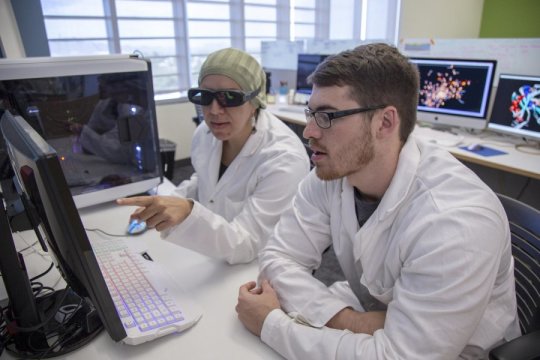[ad_1]
Babies born with pontocerebellar hypoplasia type Ib often do not survive past one year. Born with an underdeveloped brain, infants struggle to move, feed and even breathe.
Scientists have little understanding about the biology behind the deadly disease besides knowing that a genetic mutation is implicated.
Now, researchers at the University of Arizona College of Medicine — Tucson have keyed into the biological mishap that causes stunted brain growth and, ultimately, muscle movement failure.
“We wanted to figure out the biological processes leading to the disease,” said May Khanna, PhD, UA assistant professor of neuroscience and pharmacology. “That knowledge could help us develop a drug to stop the disease progression. Right now, there is no cure.”
In a study published this fall in the journal ACS Chemical Biology, Dr. Khanna and her lab describe how the disease is caused by the failure of one RNA molecule to bind to its protein partner. The disconnect ultimately causes brain development to fail.
“It’s like a cogwheel that’s missing a spoke and no longer can turn,” Dr. Khanna explained. “You’re left with a protein that is unable to function and do its job anymore.”
The team now hopes to develop a drug that prompts the RNA molecule to bind to the protein in infants diagnosed with the disease.
While the discovery is significant, Dr. Khanna said the team’s unique approach to understanding the disease also is noteworthy.
To prove that the RNA-to-protein bind is the epicenter of the disease, Dr. Khanna’s lab created a unique molecule to cause the disease.
The molecule was designed to bind to the protein itself, interrupting the natural docking process of the RNA and, therefore, stopping the RNA-to-protein bind. When applied to lab models, the compound induced the classic symptoms of pontocerebellar hypoplasia type Ib.
“We believe we are the only ones who have done this — used a chemical approach to induce a neurodegenerative disease,” Dr. Khanna said. “It’s a bit like we created a venom, but ultimately with a positive goal to find the antidote.”
Dr. Khanna now is interested in applying the unique approach to discover the causes of other diseases.
Story Source:
Materials provided by University of Arizona Health Sciences. Note: Content may be edited for style and length.
[ad_2]















